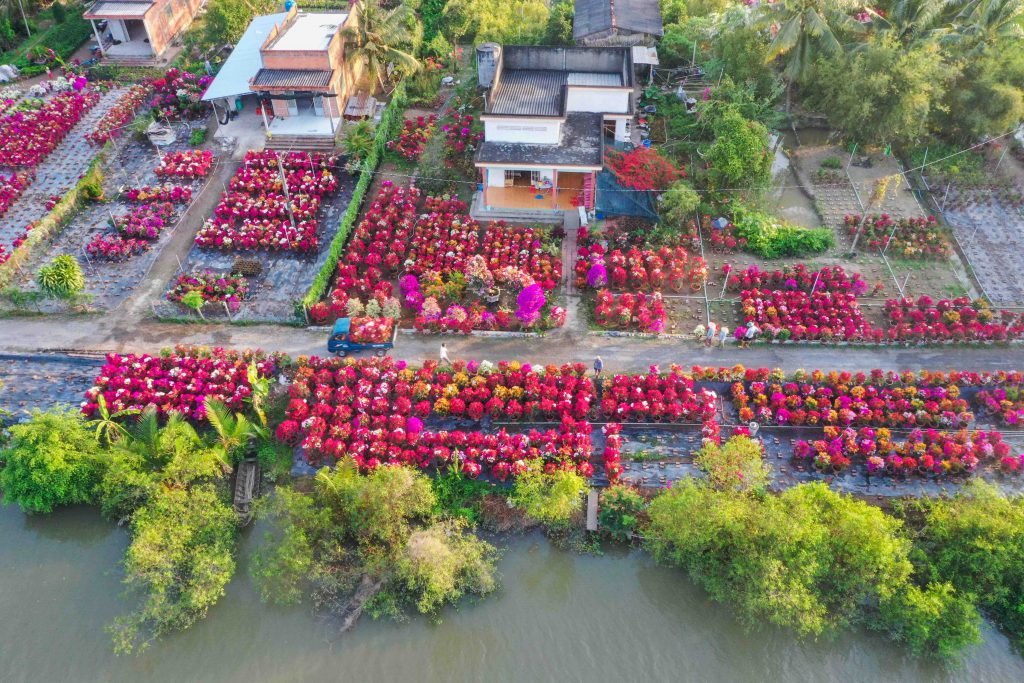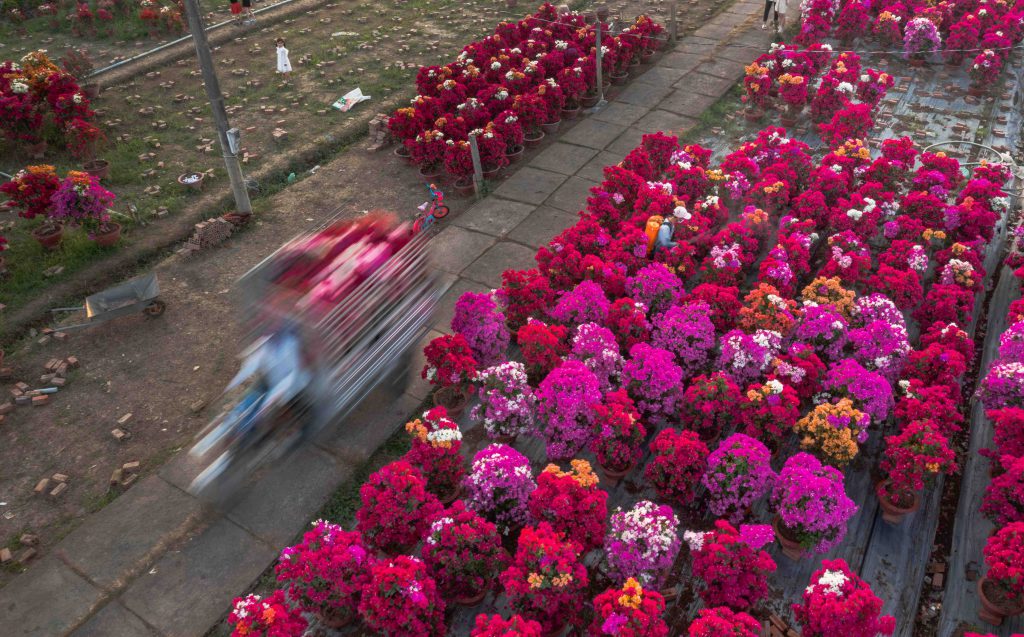Story: Huynh Phuong
Photos: Long Ho
For over two decades, villagers in Phu Son have grown bougainvilleas, attracting tourists and photographers every spring.
Nestled along the Ham Luong River in Cho Lach District, Ben Tre Province, Phu Son is among the oldest bougainvillea-growing villages in the Mekong Delta. Despite many ups and downs, the village has grown into a network of production cooperatives, attracting nearly 500 gardening households and establishing itself as the region’s largest hub for cultivating bougainvilleas, also known as “paperflowers”.

In the days leading up to Tet, the 1km-long stretch of road from Phu Son commune’s center to Lan Dong hamlet bustles with activity. Over 100 gardening households display pots of bougainvilleas in various sizes, arranged in rows and colors. Trucks and motorcycles line the road to collect these flowers, bringing spring to countless homes.
The art of growing Tet flowers
Growing bougainvilleas that bloom abundantly just in time for Tet requires skill and years of experience. Gardeners need 10 months to raise a bougainvillea plant through several stages: cutting propagation, watering, fertilizing, and potting, followed by grafting, pruning, and shaping. The key step involves restricting water at the end of the 11th lunar month and maintaining drought conditions for about a week to induce blooming.

Bougainvillea bushes are typically shaped to heights of 0.5m or more, with flowers ranging from pink, red, orange, and white, to purple. The leaves may be plain green or marbled. Various grafted varieties include tri-color, five-color, and foreign variations from India, Thailand, etc. Customers can choose from many options.
Welcoming spring
Along with yellow apricot blossoms, chrysanthemums, and marigolds, bougainvilleas are popular for Tet. They have bright blooms and are easy to grow as decorative fences or gate arches, adorning the living spaces around homes. The flower-laden branches stretch to reach the spring sunlight, symbolizing new vitality and bringing homeowners luck, prosperity, and good fortune. A beautiful pot of paperflowers typically costs between 100,000 to 500,000 VND. Bushes with large, aged trunks and intricately shaped branches can cost tens of millions of dong, meeting the needs of more sophisticated flower enthusiasts.
Bougainvilleas are the key agricultural product in Phu Son, which has “one commune, one product”. Lan Dong hamlet has been designated as Cho Lach district’s cultural tourism village. Gardening households arrange flower pots attractively and neatly along the commune’s main road, drawing visitors to sightsee, take photographs, and learn about flower cultivation techniques.

“I was quite surprised when viewing the bougainvillea village from above, with stretches of colors blending with the working rhythm to create a beautiful spring picture,” shared Ms. Cao Thi Ngoc Diem, a photographer from Ho Chi Minh City. In recent years, Phu Son has also welcomed many international tourists eager to experience life in a flower-growing craft village.
Phu Son’s residents grow and sell bougainvilleas year-round, but the run-up to Tet is the busiest period. Before the 23rd day of the last lunar month – when the Kitchen God returns to heaven – the village’s flowers are transported across the Mekong Delta and even to northern regions, including major cities like Hanoi. May Phu Son’s residents welcome the 2025 Year of the Snake with joy from a successful and profitable harvest!










